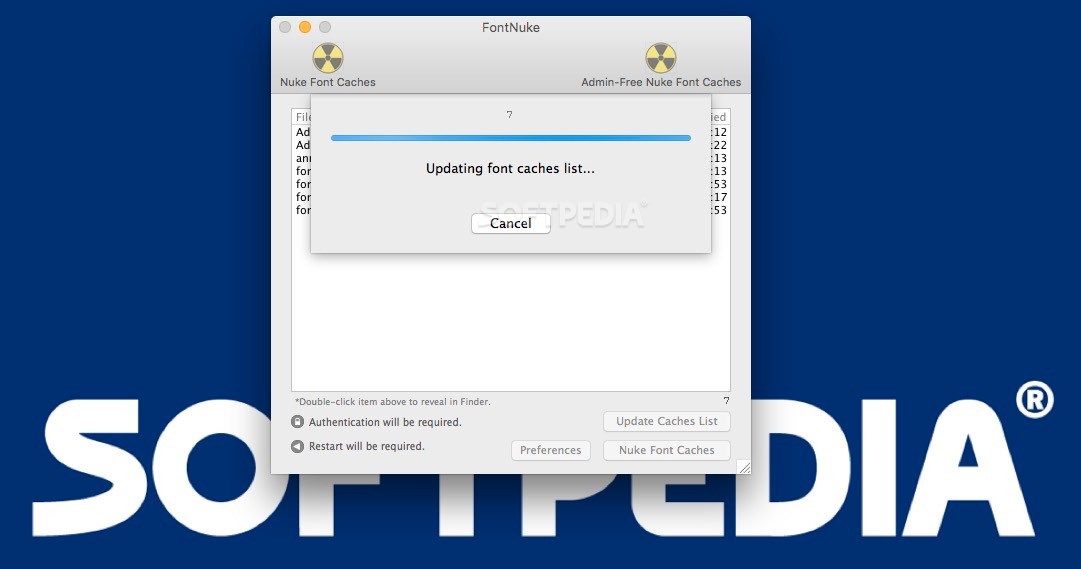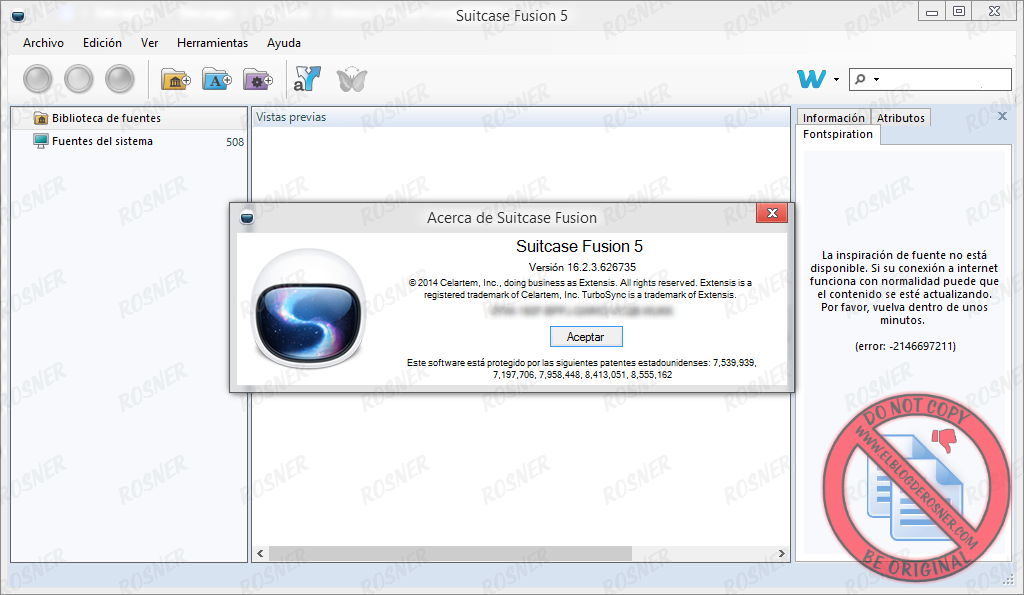
You can now rename the “l” folder, “Backup Fonts” and move them to a backup location. You can now remove the old Suitcase Fusion.fontvault.Ħ. Launch Suitcase Fusion and drag and drop the “l” folder into the Suitcase Fusion application window the fonts will be re-imported into the new fontvault.ĥ. Navigate to the the “SA/l” folder and drag it to the Desktop this folder contains your fonts.Ĥ. Right-click (or Control-click) on the Suitcase Fusion.fontvault and select “Show Package Contents”.ģ.

Move the damaged Suitcase Fusion.fontvault back to the Desktop.Ģ. If you receive the same error message about your old fontvault, then the vault is damaged and you will need to re-add your fonts to a new fontvault.ġ. Click Complete Uninstall in Step 2, and click Yes to confirm removal. Select Suitcase Fusion 5 on the interface and click Run Analysis button to scan Suitcase Fusion 5. If you are able to get back into your old fontvault, you simply had a bad preference file. Launch Osx Uninstaller in the Launchpad after quiting Suitcase Fusion 5 in the Dock. Simply add your fonts to the new fontvault by drag and drop into the Suitcase Fusion application window.ġ) choose Suitcase Fusion > Preferences > Type Core and press the “Stop FMCore” button to quit the application.Ģ) Move the Suitcase Fusion.fontvault on your Desktop back to: /Users//Library/Extensis/Suitcase Fusion/ When working with tools in the create or modify menus, you’ll see next to the various inputs, an X.

Of course, Suitcase Fusion 8 has new versions of its Auto-activation plugins for the latest design applications from Adobe and Quark and it still activates fonts in any app when the app asks for it. Fusion 360 however, has a bunch of neat tricks for when you make errors. In my opinion, this new version of Suitcase Fusion is a must-upgrade, certainly if you’re still using version 6. fontvault).ĥ) Are there font sets in your old fontvault you would like to recover? One of the most common things I see beginners do is freak out if they click on the wrong thing. You should now have a clean slate a fresh start an empty “Font Library” (i.e. NOTE: In OSX 10.7 thru 10.10: In the Finder, hold down the Option key and choose Go > Library to reveal this hidden directory.ģ) Navigate to: /Users//Library/Extensis/Suitcase Fusion/ and move: Suitcase Fusion.fontvault to your Desktop.Ĥ) Launch Suitcase Fusion from your Dock or Applications folder. As a mature application, this is an evolutionary upgradeand that’s not a bad thing. If FMCore is not running then simply proceed to the next step.Ģ) Navigate to: /Users//Library/Preferences/ and remove the following files: I’m now on my fourth version of Extensis Suitcase Fusion, having first used it at version 3 and I have been pleased with the improvements with each release.

When the confirmation dialog appears, click “Force Quit”. If the FMCore process is running, then select it and click the “Quit Process” button. It can also occur after upgrading to a new version of Suitcase Fusion or if your font vault has become damaged.ġ) Open /Applications/Utilities/Activity Monitor and type “FMCore” into the Filter search box. This happens when Suitcase Fusion tries to launch after a power failure or when the computer stops responding.
#Suitcase fusion 6 tutorial mac os x
Suitcase Fusion on Mac OS X fails to launch with the error “Could not open the Font Vault at the location: Users/username/Library/Extensis/Suitcase Fusion/Suitcase Fusion.fontvault”.


 0 kommentar(er)
0 kommentar(er)
